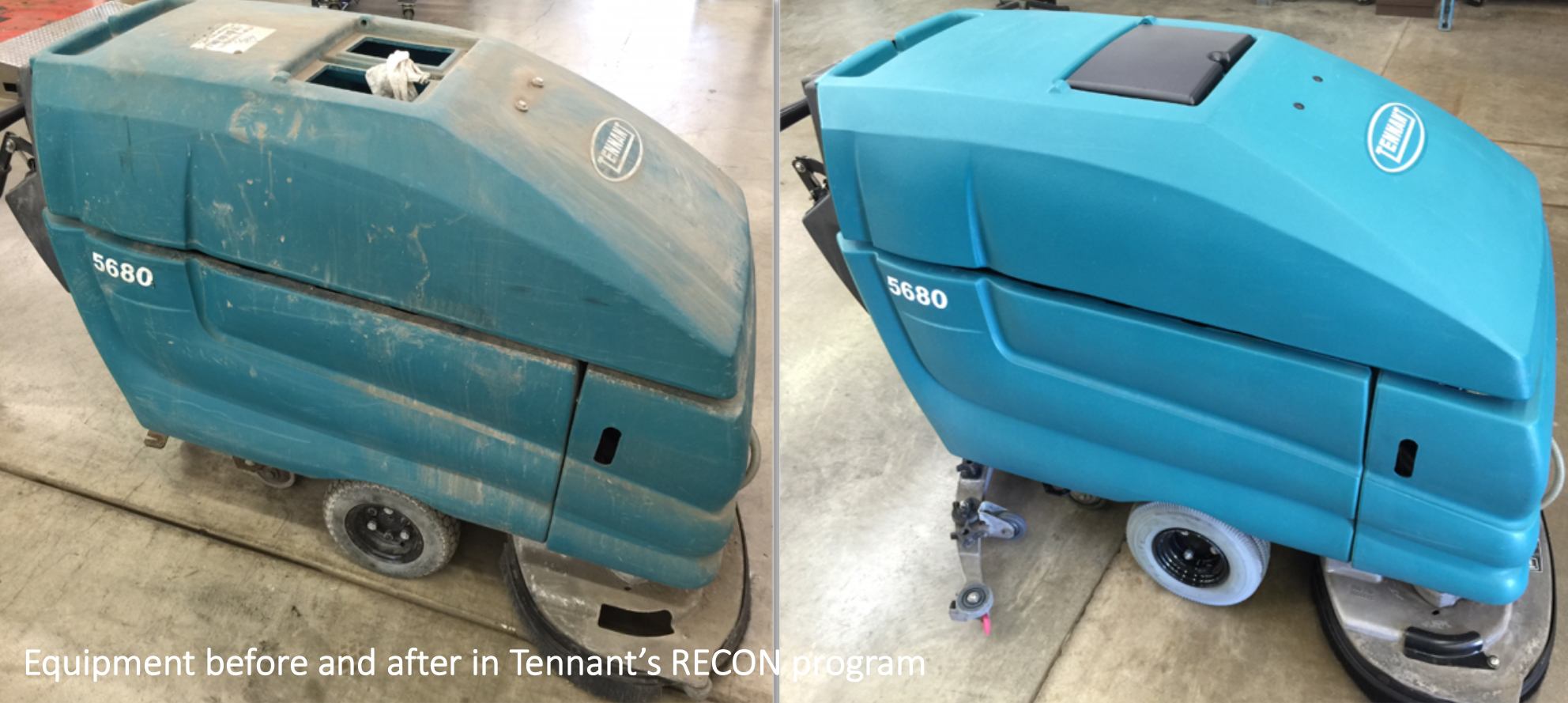Tennant: Creating circularity through customer-focused RECON program
Region
GlobalTimeline
2014 - presentAudience
Manufacturing industryChallenge
Tennant’s innovative RECON program found value it wasn’t previously capturing by creating a new business model and reshaping the company-customer relationship. Through the RECON program, Tennant reconditions its previously owned cleaning equipment and resells the products at a discounted price.
This innovative approach lengthens the lifespan of their machines, helping conserve materials and reduce waste to landfills as old machines are reused and repaired. Customers purchasing Tennant RECON products would have likely purchased a new or used product from another company at their price point. Reconditioning uses less energy and fewer components, thereby reducing cost and greenhouse gases, compared to manufacturing new products. By offering a refurbished product, Tennant is reducing their overall resource footprint.
Result
- Identify gaps in product life cycle.
- Identify ways where life cycles can be extended to minimize waste.
- Expand customer base through a program with used and discounted products without significantly impacting new product sales.
Through introducing the RECON program, Tennant embedded circularity principles and demonstrated how to create a new business model to advance systemic change in their processes and products.
Tennant Company demonstrates how to create a new business model to advance circularity through their customer-focused RECON program. By selling refurbished products as a separate product line, they have reduced waste, cultivated a new customer base, and reshaped the supply of floor cleaning equipment in an affordable, sustainable manner.
Tennant has found that the RECON program has not diminished sales of its new products. Customers of the RECON program are primarily first-time Tennant buyers. Furthermore, the company’s RECON customer base and sales are notably resilient through economic recessions.
Process
In 2014, Tennant introduced the RECON program after significant changes to its facilities and sales processes. Creating the program required developing a new customer base and embodying the company’s circularity principles in new ways. A first step in the process was contacting customers with products reaching the end of their lifecycle to have the machines returned to factories for refurbishing. Next, service centers were re-fitted and RECON-specific facilities were opened, since a traditional assembly line would not work for machines at different levels of wear. Finally, in-person training was provided to the sales team on how to sell refurbished products.
Through the RECON program, Tennant employees have learned more about how their machines perform over time and how customers use the machines, resulting in valuable product and customer insight. Engineering teams have spent time at RECON facilities to understand the reconditioning process and identify ways products can be designed for longevity and easier disassembly and refurbishing. Since implementation of this new model, besides extending machine life, Tennant has been able to refurbish some component parts as well. And as a side benefit, parts that cannot be reused are now more likely to be recycled as machines move through the refurbishing process.


Member Highlight: Tennant
Tennant Company, headquartered in Minnesota, is a member of the Sustainable Growth Coalition and serves markets around the world as a recognized leader of the cleaning industry. They are passionate about developing innovative and sustainable solutions which help their customers clean more spaces more effectively.
Circularity Toolkit Case Studies
The Circularity Toolkit prepared by members of the Sustainable Growth Coalition offers examples of multi-national corporations investing in circularity with global implications and small-to-medium-sized businesses actively integrating circular principles to meet regional needs.
Corporate Guide to Sustainable Landscaping
Leading businesses and organizations are capturing value by turning corporate properties and potentially under-valued landscapes into productive, biologically diverse areas.
C.H Robinson: Calculating carbon emissions for sustainable supply chains
Sustainable Growth Coalition member C.H. Robinson’s recent efforts include Emissions IQ to help customers track their supply chain's transportation emissions and carbon footprint.
HealthPartners: Promoting circularity and building a business case
At HealthPartners, the secret sauce for achieving circularity is in senior leadership support, strategic partnerships, accountability, and a strong connection to its mission.
